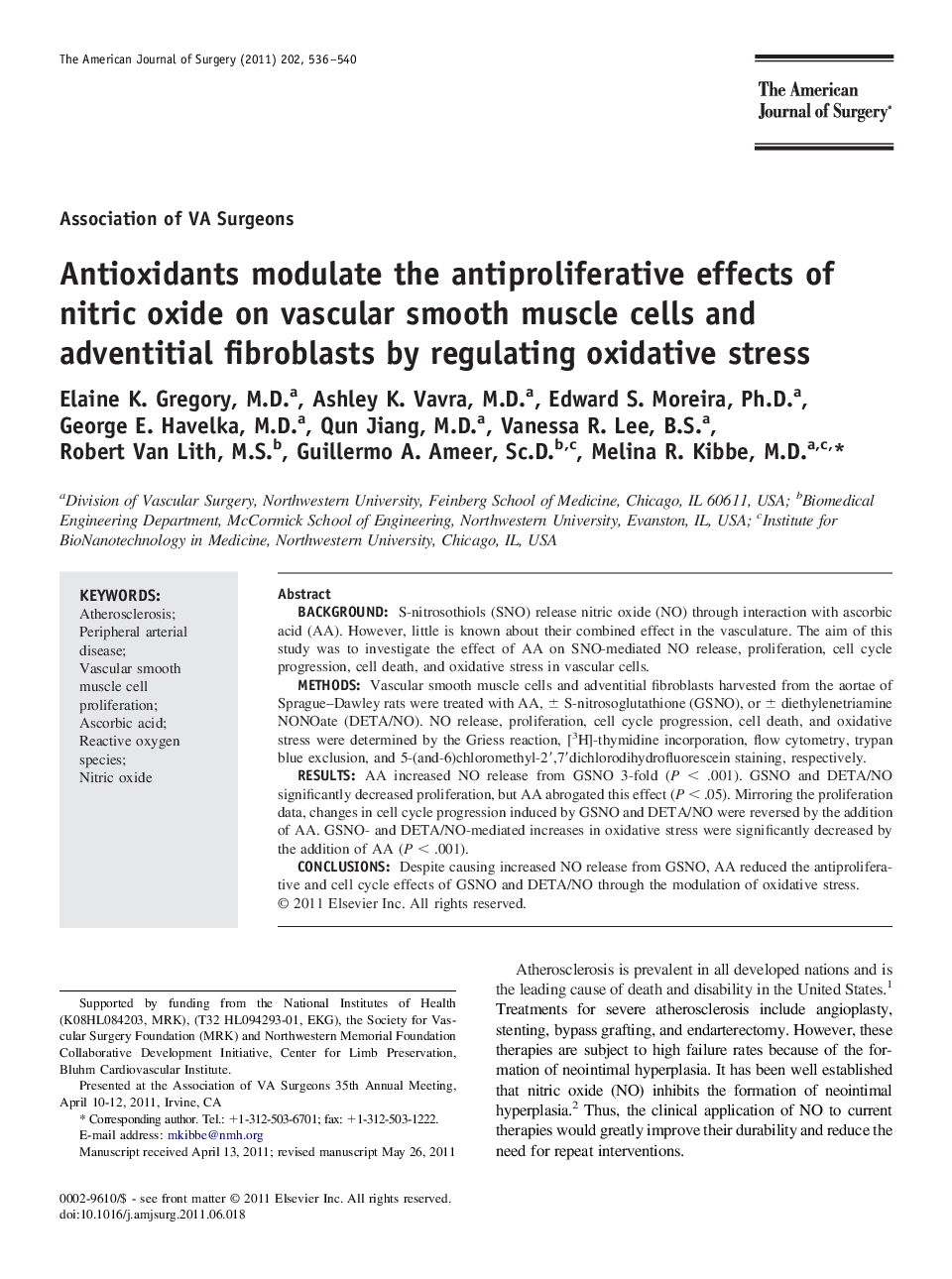| Article ID | Journal | Published Year | Pages | File Type |
|---|---|---|---|---|
| 4280020 | The American Journal of Surgery | 2011 | 5 Pages |
BackgroundS-nitrosothiols (SNO) release nitric oxide (NO) through interaction with ascorbic acid (AA). However, little is known about their combined effect in the vasculature. The aim of this study was to investigate the effect of AA on SNO-mediated NO release, proliferation, cell cycle progression, cell death, and oxidative stress in vascular cells.MethodsVascular smooth muscle cells and adventitial fibroblasts harvested from the aortae of Sprague–Dawley rats were treated with AA, ± S-nitrosoglutathione (GSNO), or ± diethylenetriamine NONOate (DETA/NO). NO release, proliferation, cell cycle progression, cell death, and oxidative stress were determined by the Griess reaction, [3H]-thymidine incorporation, flow cytometry, trypan blue exclusion, and 5-(and-6)chloromethyl-2′,7′dichlorodihydrofluorescein staining, respectively.ResultsAA increased NO release from GSNO 3-fold (P < .001). GSNO and DETA/NO significantly decreased proliferation, but AA abrogated this effect (P < .05). Mirroring the proliferation data, changes in cell cycle progression induced by GSNO and DETA/NO were reversed by the addition of AA. GSNO- and DETA/NO-mediated increases in oxidative stress were significantly decreased by the addition of AA (P < .001).ConclusionsDespite causing increased NO release from GSNO, AA reduced the antiproliferative and cell cycle effects of GSNO and DETA/NO through the modulation of oxidative stress.
